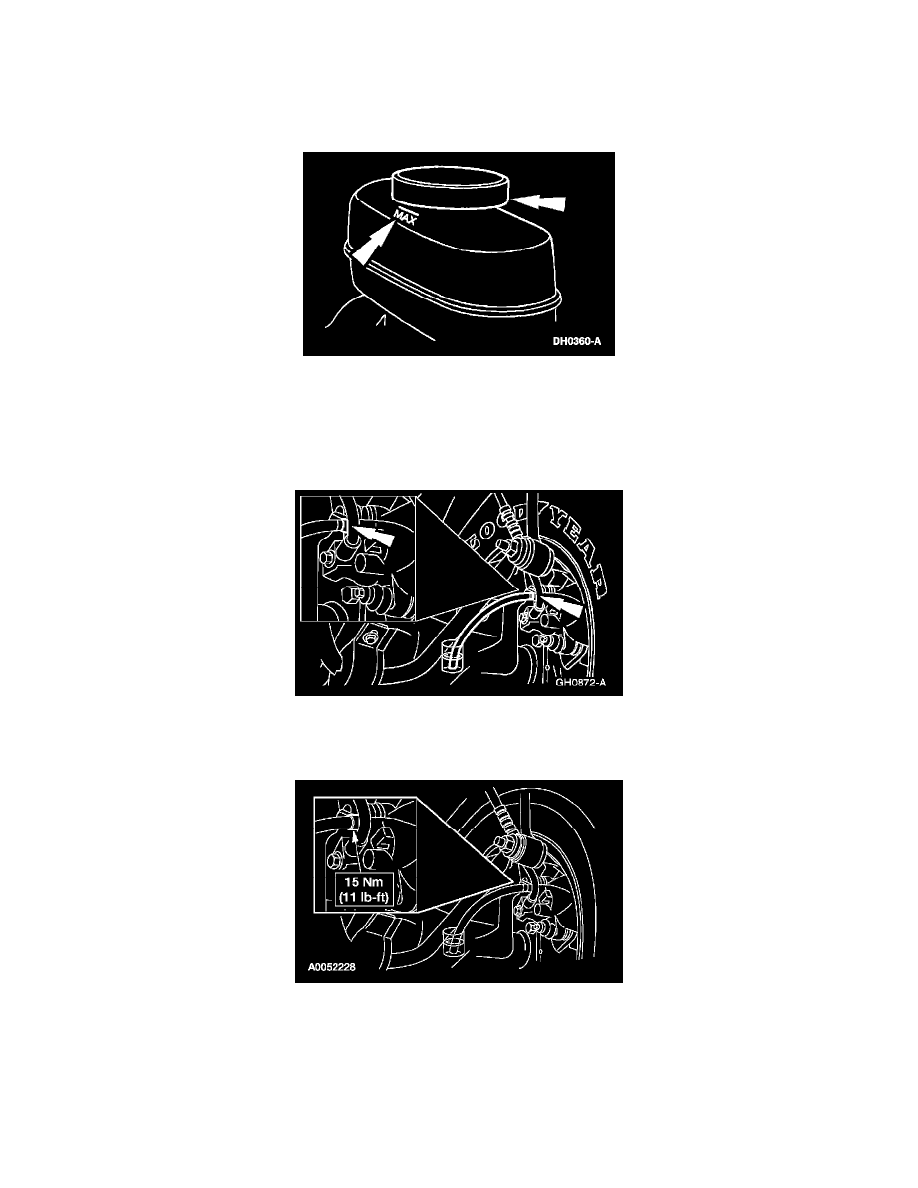Expedition 4WD V8-5.4L SOHC VIN 5 (2005)

NOTE: When any part of the hydraulic system has been disconnected for repair or new installation, air may get into the system and cause spongy
brake pedal action. This requires bleeding of the hydraulic system after it has been correctly connected. The hydraulic system can be bled manually or
with pressure bleeding equipment.
NOTE: Bleed the longest line first. Be sure the bleeder tank contains enough specified brake fluid to complete the bleeding operation.
1. Clean all dirt from and remove the brake master cylinder filler cap and fill the brake master cylinder reservoir with the specified brake fluid.
2. NOTE: Master cylinder pressure bleeder adapter tools are available from various manufacturers of pressure bleeding equipment. Follow the
instructions of the manufacturer when installing the adapter.
Install the bleeder adapter to the brake master cylinder reservoir and attach the bleeder tank hose to the fitting on the adapter.
3. Place a box end wrench on the RH rear disc brake caliper bleeder screw. Attach a rubber drain tube to the RH rear disc brake caliper bleeder screw
and submerge the free end of the tube in a container partially filled with clean brake fluid.
4. Open the valve on the bleeder tank.
5. Loosen the rear disc brake caliper bleeder screw. Leave open until clear, bubble-free brake fluid flows, then tighten rear disc brake caliper bleeder
screw and remove the rubber hose.
6. Continue bleeding the rest of the system, going in order from the LH rear disc brake caliper to the RH front disc brake caliper ending with the LH
front disc brake caliper.
7. Close the bleeder tank valve and remove the tank hose from the adapter and remove the adapter.
